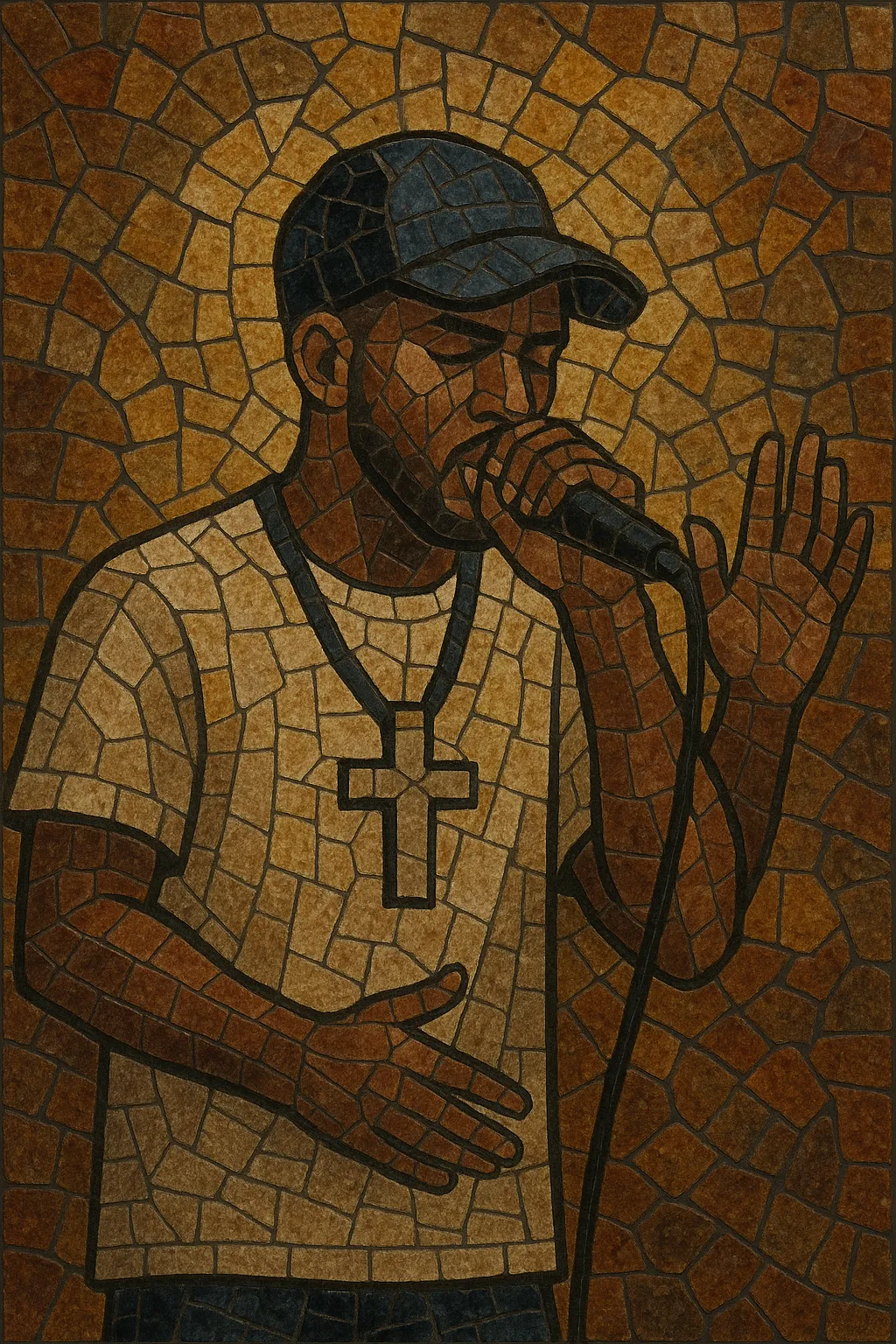Rap chrétien (Christian rap) is a branch of hip hop that centers its lyrics on Christian faith, biblical themes, and spiritually oriented storytelling. It retains the stylistic range of hip hop—from classic boom bap to modern trap and melodic rap—while prioritizing messages of hope, testimony, and social concern through a Christian worldview.
Artists often aim for accessible, radio‑ready production and clear delivery to make faith-based content understandable to broad audiences, including church youth and mainstream listeners. While approaches vary—from worship-rap hybrids to street-conscious narratives—profanity and glorification of violence are generally avoided, and the music frequently incorporates scripture, evangelistic themes, and personal redemption arcs.
Christian rap emerged in the United States during the 1980s, shortly after hip hop’s early commercial breakthrough. Pioneers began pairing evangelical and biblical messages with rap’s rhythmic delivery and breakbeat foundation, positioning the style as a vehicle for youth outreach and testimony within churches and faith-based communities.
The 1990s saw the formation of dedicated labels and collectives, increased touring through church networks, and a solidifying fan base. Production values improved alongside the broader hip hop industry, while lyrics emphasized scripture, personal conversion, and social responsibility. This decade established the core aesthetics: boom bap rhythms, sample-based beats, and clear, didactic lyricism.
In the 2000s, Christian rap broadened stylistically to include southern hip hop, trap, and pop-rap aesthetics. Artists achieved notable chart success, media visibility, and collaborations across Christian and mainstream spaces. Thematically, the music expanded from purely evangelistic content to include nuanced reflections on identity, justice, mental health, and culture—still framed by Christian faith.
Digital distribution, YouTube, and social media amplified the genre’s global footprint, encouraging vibrant scenes in Europe, Africa, and the Francophone world. Francophone artists adopted contemporary production (trap, drill-influenced grooves, melodic hooks) while rapping in French or code-switching with regional dialects. This period also saw more worship-rap hybrids and collaborations with gospel, Afrobeats, and R&B, reflecting global church music trends.
Today, rap chrétien encompasses a spectrum—from congregational worship-inflected tracks to culturally engaged, lyrically dense projects. It continues to balance missional aims with artistic excellence, using current hip hop sonics to communicate faith-centered perspectives.


